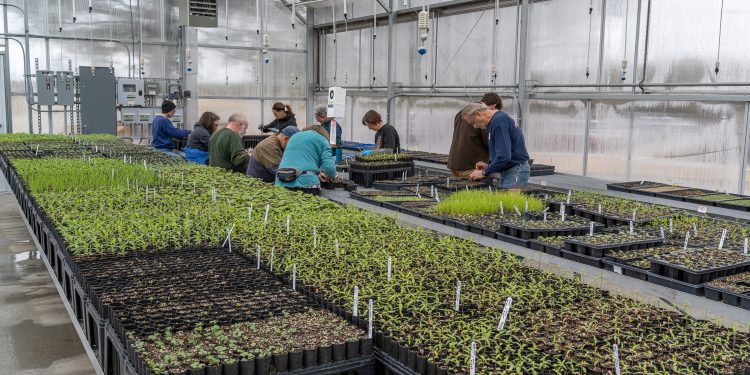#Sustainability #NativePlants #Conservation #EnvironmentalRestoration #CommunityEngagement #GreenhouseProject #ClimateChangeResilience #EcosystemRevitalization
In the heart of northern Michigan, the Grand Traverse Regional Land Conservancy (GTRLC) embarked on a mission to fortify the region’s natural lands against the challenges posed by climate change and invasive species. The Conservation Center’s Native Plant Greenhouse Project, initiated in the spring of 2023, has proven to be a resounding success. As the inaugural greenhouse season concludes, let’s delve into the numbers that define this transformative endeavor. By the Numbers:
In the heart of northern Michigan, the Grand Traverse Regional Land Conservancy (GTRLC) embarked on a mission to fortify the region’s natural lands against the challenges posed by climate change and invasive species. The Conservation Center’s Native Plant Greenhouse Project, initiated in the spring of 2023, has proven to be a resounding success. As the inaugural greenhouse season concludes, let’s delve into the numbers that define this transformative endeavor. By the Numbers:
- 10,000 vs. 14,000: Originally planning to cultivate 10,000 native plants, GTRLC exceeded expectations by raising an impressive 14,000 in its Conservation Center greenhouse. This abundance underscores the commitment to ecological restoration across GTRLC’s expansive five-county service region.
- Diversity in Flora: The greenhouse nurtured 17 different species of native upland and wetland forbs, strategically chosen for their resilience in challenging habitats. From wetland “workhorses” like blue vervain to upland plants such as black-eyed susan and wild lupine, each species contributes to habitat restoration and supports local wildlife.
- Strategic Plantings: The impact of the greenhouse extends to six locations under GTRLC’s care, with the majority of plants enhancing the Mitchell Creek Meadows habitat—a “dry sand prairie habitat” at significant risk. Additionally, plantings reached other crucial sites, including Maplehurst Natural Area, Arcadia Dunes Grassland, Arcadia Marsh, Upper Manistee Headwaters, and the Timbers Recreation Area.
- Community Involvement: An army of 83 dedicated greenhouse volunteers invested a combined 383 hours in cultivating native plants, with an additional 223.5 hours spent on planting across various properties. This robust community engagement exemplifies the shared commitment to environmental stewardship.










